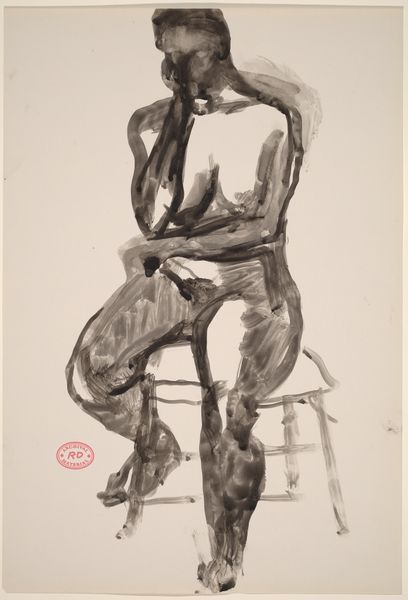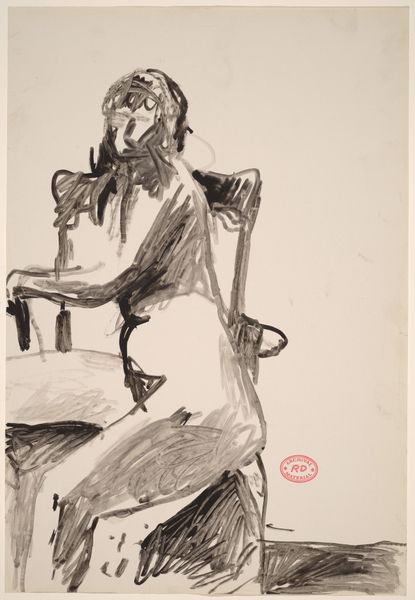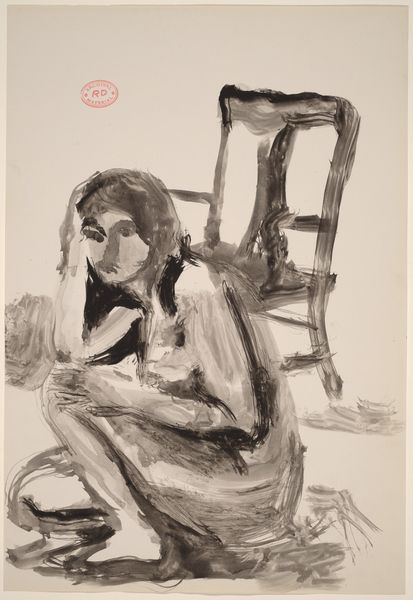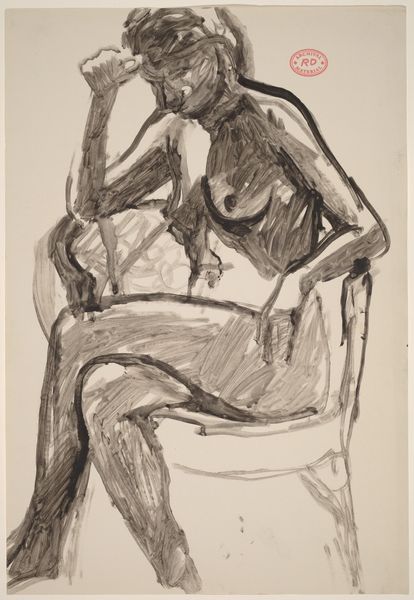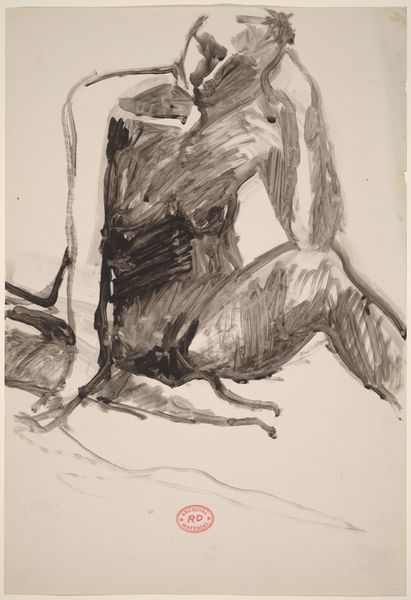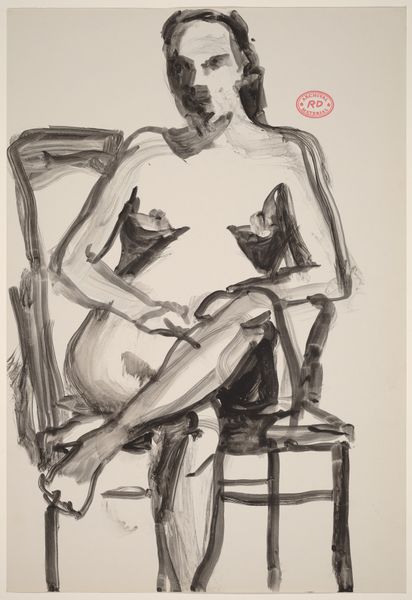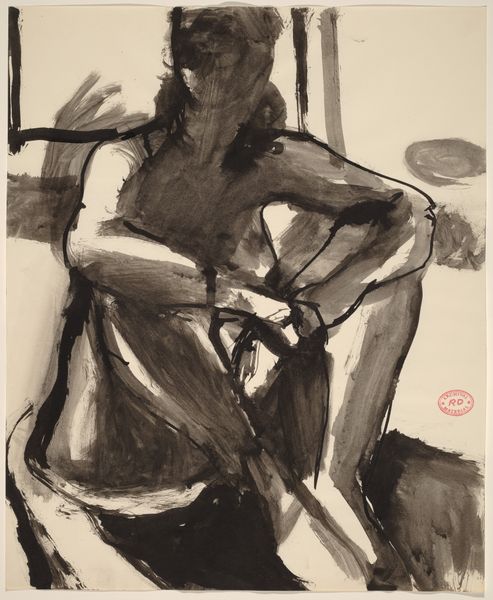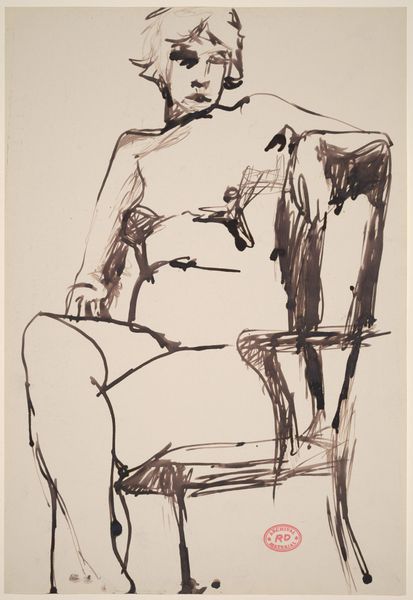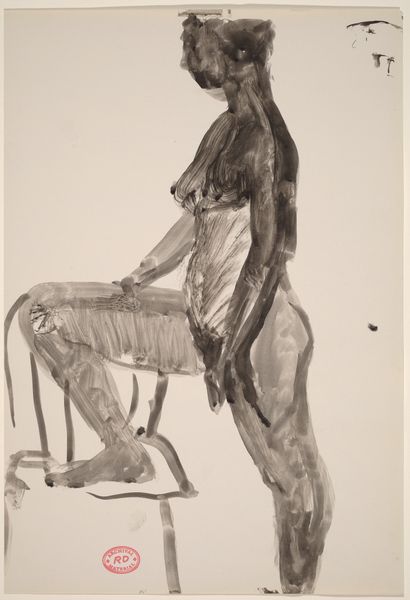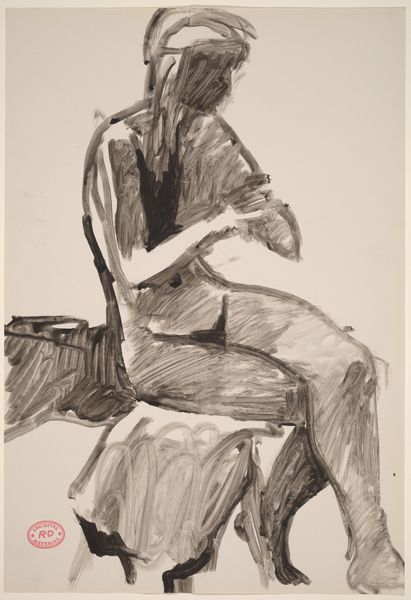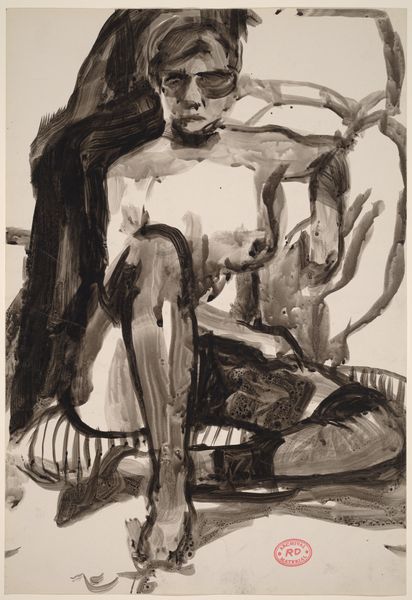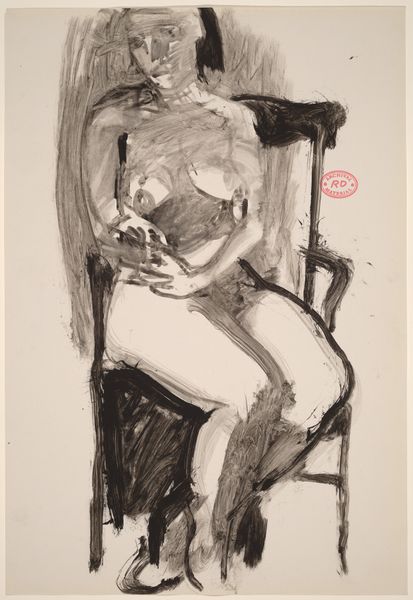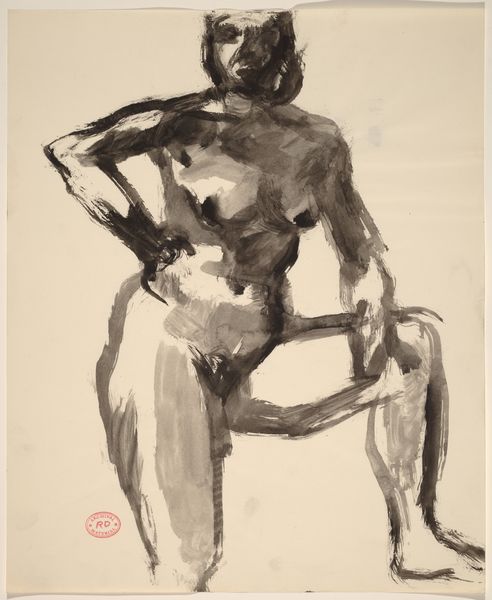![Untitled [female nude seated in a highback chair] by Richard Diebenkorn](/_next/image?url=https%3A%2F%2Fd2w8kbdekdi1gv.cloudfront.net%2FeyJidWNrZXQiOiAiYXJ0ZXJhLWltYWdlcy1idWNrZXQiLCAia2V5IjogImFydHdvcmtzLzMyYmE1ZTQ4LTU3MTYtNDQzZS05MWIwLWI2ZjVjZWJlNGNmNi8zMmJhNWU0OC01NzE2LTQ0M2UtOTFiMC1iNmY1Y2ViZTRjZjZfZnVsbC5qcGciLCAiZWRpdHMiOiB7InJlc2l6ZSI6IHsid2lkdGgiOiAxOTIwLCAiaGVpZ2h0IjogMTkyMCwgImZpdCI6ICJpbnNpZGUifX19&w=3840&q=75)
Untitled [female nude seated in a highback chair] 1955 - 1967
0:00
0:00
drawing, ink
#
portrait
#
drawing
#
charcoal drawing
#
figuration
#
bay-area-figurative-movement
#
ink
Dimensions: overall: 40.6 x 27.9 cm (16 x 11 in.)
Copyright: National Gallery of Art: CC0 1.0
Editor: So, here we have Richard Diebenkorn's "Untitled [female nude seated in a highback chair]," made sometime between 1955 and 1967, a drawing done with ink and charcoal. There’s a boldness in the lines, but also a kind of unfinished quality to the piece. What do you see when you look at it? Curator: Initially, I am drawn to the contrasting elements within its composition. Consider the interplay between the density of the black ink and the stark white of the paper. Notice the bold strokes of the chair versus the more tentative lines defining the figure. The juxtaposition creates a visual tension that arrests the eye, does it not? Editor: Absolutely, there is a tension! It’s almost like a study in contrasts. It makes you wonder, are we meant to focus on the chair, or is it merely a prop? Curator: Precisely. Diebenkorn's mark-making creates formal instability. Note the negative space surrounding the figure and chair; it is as important as the positive forms. How does this deliberate ambiguity contribute to your understanding? Editor: It gives the piece a very dynamic feel, an energy. Almost like the image is resolving itself as we watch it. So, he's almost more focused on line and shape than the subject matter. Curator: Yes, the subject provides the structural architecture upon which to experiment with form. We see a reduction to essential visual components: line, shape, value. A strategic formal reduction. The expressive handling transforms figuration into an abstract configuration. Editor: I see, so the "what" is not as important as the "how". It really is the language that creates impact. Curator: Precisely. Observing how an artist uses the elemental aspects of the language of art—line, shape, texture, value— reveals intentional choices to discover meaning in form itself. Editor: It makes me want to experiment more with this style of drawing. Looking closely, there’s more going on than first meets the eye!
Comments
No comments
Be the first to comment and join the conversation on the ultimate creative platform.
